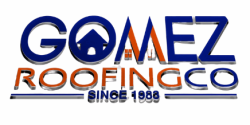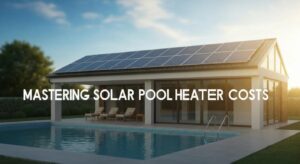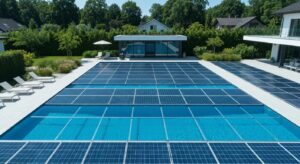Uncover Hidden Costs in Decking
Unexpected expenses can inflate a commercial decking project budget by 20 percent or more, catching property managers and homeowners off guard. Understanding hidden costs when hiring a commercial decking contractor is essential to maintain financial control and ensure project success. This article explains what additional costs you should anticipate when hiring a commercial decking contractor, covering five core themes:
- Common hidden cost categories
- Florida-specific permit requirements
- Material cost drivers and comparisons
- Contractor vetting to avoid surprises
- Long-term ownership and budgeting strategies
With expert insights from Gomez Roofing, you’ll learn how transparent quoting, strategic planning, and professional installation of solutions like Duradek waterproof vinyl decking can protect your bottom line and enhance property value.
What Are the Common Hidden Costs in Commercial Decking Projects?
Commercial decking hidden costs refer to unforeseen expenses beyond the initial installation quote that can impact budget forecasts and project timelines. These costs often emerge from permit fees, material price swings, labor management, design changes, and future maintenance obligations. Anticipating each category helps property managers and homeowners secure accurate estimates and avoid cash-flow disruptions. Recognizing these hidden cost drivers lays the groundwork for navigating Florida’s regulatory landscape in the next section.
Hidden Costs in Commercial Redesigns
Hidden costs can derail even the most well-planned commercial flooring projects. Be vigilant about the following often-overlooked expenses: Subfloor Preparation, Removal and Disposal, Downtime Costs, and Transitional Thresholds.
Ansbro Aldrich Flooring, How to Budget for Your Commercial Flooring Project: Hidden Costs and ROI (2024)
Which Permit Fees and Regulatory Costs Should You Anticipate?
Commercial deck installations generally require permits to confirm code compliance and structural safety. Permit fees and regulatory costs vary by jurisdiction but typically include application fees, inspection charges, and possible impact assessments.
Before submitting your plans, gather documentation and payment for:
- Building permit application fees (often $50–$600)
- Plan review fees based on project valuation (5 percent of construction cost)
- Special inspections for waterproof membranes or parapet modifications
Even minor changes—such as adding handrails or modifying drainage—can trigger additional permit amendments. Budgeting for permit-related hidden costs ensures regulatory compliance and prevents costly stop-work orders.
How Do Material Price Fluctuations Impact Your Budget?
Material price fluctuations occur when market demand, supply chain disruptions, or seasonal factors affect product costs. Decking materials like wood, composite, PVC, and Duradek waterproof vinyl each respond differently to market pressures.
| Material | Cost Factor | Budget Impact |
|---|---|---|
| Wood | Seasonal supply shortages | 10–15 percent spikes |
| Composite | Resin price volatility | 8–12 percent swings |
| PVC | Petrochemical cost changes | 5–10 percent shifts |
| Duradek Vinyl | Import logistics | 3–6 percent variance |
This comparison highlights how selecting a stable material like Duradek can reduce budget volatility and support predictable project planning, which we’ll expand upon when exploring material choices.
What Labor and Subcontractor Expenses Might Arise Unexpectedly?
Labor and subcontractor expenses can exceed initial estimates due to extended installation schedules, specialized skill requirements, or coordination challenges. Common overruns include:
- Additional crew hours for site remediation or structural repairs
- Premium rates for certified waterproofing or welding specialists
- Delays requiring overtime labor or multiple subcontractor mobilizations
Managing labor hidden costs demands rigorous project oversight, clear scope definitions, and contingency allowances tied to realistic productivity rates.
How Can Design Changes and Custom Features Increase Costs?
Design changes and custom features introduce scope creep by evolving the original plan. Adding accessibility ramps, built-in planters, or decorative railings can incur:
- Change-order fees for revised drawings and permit updates
- Higher material and labor rates for custom fabrication
- Coordination costs among architects, engineers, and installers
Limiting mid-project design revisions and approving custom add-ons early helps contain hidden design-driven expenses.
What Are the Long-Term Maintenance and Repair Costs to Consider?
Long-term maintenance and repair costs ensure deck integrity and safety over its lifespan. Beyond initial installation, budget for:
- Annual cleaning and re-coating to preserve waterproof membranes
- Periodic structural inspections and minor repairs for fasteners or joists
- Waterproofing system renewals every 10–15 years
Duradek Vinyl Decking Lifespan
Duradek boasts an impressive lifespan, lasting a remarkable 15-25+ years. Regular cleaning with a Duradek-approved cleaner helps maintain the deck’s beauty and performance.
Caldek, How Long Will Duradek Last? (2024)
This source provides information on the longevity of Duradek decking, which can help in budgeting for long-term maintenance and replacement costs.
How Do Commercial Decking Permit Requirements Affect Project Costs in Florida?
Florida’s building codes and permit protocols shape commercial decking cost structures by defining mandatory reviews, fee schedules, and inspection criteria. Understanding local procedures minimizes delays and unexpected permit charges.
What Building Permits Are Required for Commercial Decking Installations?
Commercial decking installations in Florida require:
- Building permit for structural modifications
- Electrical permit if lighting or outlets are installed
- Plumbing permit for integrated drainage or irrigation
- Special inspection authorization for waterproof membranes
Commercial Decking Permit Fees in Florida
In Florida, permits are generally required for constructing a new deck or making significant alterations to an existing one. The need for a permit hinges on several factors: Size, Height, Attachment to a structure, and Use.
Valrose, Do I Need a Permit for a Deck in Florida: Navigating Building Regulations (2023)
This source explains the need for permits in Florida for deck construction, which is crucial for budgeting and avoiding unexpected costs.
How Do Local Building Codes and Inspections Influence Costs?
Local codes and inspection stages can increase project timelines and fees:
- Plan review adds 5 percent of construction cost
- Rough framing inspection fees vary by municipality ($100–$300)
- Final inspection and certification charges ($75–$200)
These regulatory steps, while critical to safety, represent hidden costs if not incorporated in the early budget.
What Are Typical Permit Fee Ranges for Commercial Deck Projects?
Permit fees for commercial decking commonly fall within:
- Application fee: $50–$600
- Plan review: 4–6 percent of total project cost
- Inspection fees: $75–$300 per stage
Commercial Decking Permit Fees
Permit fees for commercial decking commonly fall within: Application fee: $50–$600, Plan review: 4–6 percent of total project cost, and Inspection fees: $75–$300 per stage.
City of Miami Building Permit Fee Schedule (2025)
This source provides specific fee ranges for commercial decking permits, which is essential for accurate budgeting.
How Can Contractors Assist with Securing Permits Efficiently?
Experienced contractors streamline the permitting process by:
- Preparing and submitting complete permit applications
- Coordinating required engineering or architectural plans
- Scheduling inspections to align with construction milestones
Partnering with a contractor proficient in local jurisdictional requirements, such as Gomez Roofing’s commercial decking experts, accelerates approvals and reduces hidden compliance costs.
What Factors Influence Commercial Decking Material Costs and Choices?
Material selection drives both upfront investment and total ownership expenses. Beyond aesthetics, factors like durability, maintenance requirements, and warranty terms shape material cost-effectiveness.
How Does Duradek Waterproof Vinyl Compare to Other Decking Materials?
Duradek waterproof vinyl offers a low-maintenance, highly durable membrane that resists leaks and UV degradation. Compared to traditional materials:
- Durability: Lasts 25+ years versus wood’s 10–15 year lifespan
- Maintenance: Requires annual cleaning versus wood refinishing every 2–3 years
- Waterproofing: Integral membrane eliminates deck board replacement for water damage
Duradek Waterproof Vinyl Decking
Duradek vinyl deck membranes are designed for strength, durability and slip resistance. Duradek completely seals the deck substructure ensuring water never reaches the building envelope and completely protects everything below.
Duradek, Vinyl Deck Membranes – Cost Effective Waterproofing Solutions (2024)
This source highlights the durability and waterproofing capabilities of Duradek vinyl decking, which can help reduce long-term maintenance costs.
What Are the Cost Implications of Material Durability and Maintenance?
High-durability materials reduce recurring maintenance expenses:
- Annual membrane cleaning: $0.50–$1.00 per sq ft
- Wood deck refinishing: $2.00–$3.00 per sq ft every 2–3 years
- Composite deck repairs for surface wear: $500–$2,000 per incident
Lower lifecycle costs for waterproof systems translate into predictable budgets and fewer unexpected expenditures.
How Do Supply Chain Issues Affect Material Availability and Pricing?
Global supply chain disruptions impact lead times and prices for decking components:
- Shipping delays for imported vinyl membranes
- Resin shortages for composite boards
- Seasonal log harvest restrictions for hardwood
Allocating additional time and contingency funds for supply-related delays prevents overtime labor costs and project stoppages.
What Warranty and Longevity Considerations Affect Material Value?
Warranty coverage influences hidden repair costs by defining material replacement conditions:
- Limited lifetime membrane warranty for waterproof vinyl
- 10–15 year fade and stain warranty for composites
- 5–10 year structural warranty for wood framing
Understanding exclusions and renewal procedures ensures you’re not blindsided when claims arise.
How Can You Avoid Hidden Fees When Hiring a Commercial Decking Contractor?
Proactive contractor vetting and clear contracts eliminate fee surprises and ensure cost transparency throughout the project lifecycle.
What Licensing and Insurance Should a Reliable Contractor Have?
A dependable contractor carries:
- State general contractor license for commercial construction
- Specialty waterproofing certification for membrane systems
- General liability and workers’ compensation insurance
Verifying credentials upfront protects your project from unanticipated liability or compliance fines.
Which Questions Should You Ask to Uncover Potential Hidden Charges?
To surface hidden charges, ask contractors:
- “What permits and inspections are not included in the base quote?”
- “How do you handle design revisions and change orders?”
- “Which site preparation tasks could trigger additional fees?”
- “Do you include a project contingency in your proposal?”
These targeted questions highlight areas where extra costs often appear.
How Do Detailed Contracts and Transparent Communication Prevent Surprises?
A comprehensive contract defines:
- Scope of work and deliverables
- Material specifications and allowance for price adjustments
- Change-order procedures and approval thresholds
Transparent progress reports and regular budget reviews keep hidden expenses visible and manageable.
Why Is Choosing an Experienced Contractor Like Gomez Roofing Beneficial?
Partnering with Gomez Roofing provides:
- Proven expertise in Duradek waterproof vinyl installation for rooftop terraces and balconies
- Streamlined permit application and inspection coordination
- Clear, itemized proposals that identify potential extra costs
Commercial Decking by Gomez Roofing
Duradek’s vinyl decking, installed by Gomez Roofing, is ideal for a variety of commercial applications, including rooftop terraces and balconies. Gomez Roofing brings expertise, precision, and a commitment to quality to every commercial decking project.
Gomez Roofing, Commercial Decking (2025)
This source emphasizes the benefits of using Duradek vinyl decking for commercial projects and the expertise Gomez Roofing provides in its installation.
What Are the Long-Term Ownership Costs of Commercial Decks?
Evaluating ownership costs beyond installation uncovers recurring expenses that impact lifecycle budgeting and return on investment.
What Routine Maintenance Is Required to Preserve Deck Integrity?
Routine deck maintenance includes:
- Power washing and membrane cleaning annually
- Joint inspections to detect loose fasteners
- Re-sealing transitions around penetrations
Regular care preserves waterproof integrity and forestalls costly emergency repairs.
How Do Unexpected Repairs Affect Your Budget Over Time?
Common repair scenarios include:
- Membrane puncture patching: $5–$15 per sq ft
- Joist replacement after water infiltration: $150–$300 per joist
- Railing retrofits for code upgrades: $50–$100 per linear ft
Tracking these potential costs helps maintain a replacement reserve and stabilize long-term budget forecasts.
What Are the Limitations of Decking Warranties?
Deck warranties often exclude:
- Damage from improper drainage or ventilation
- Wear from pet claws, furniture, or point loads
- Unauthorized modifications or unapproved contractors
Recognizing warranty boundaries ensures you budget for out-of-pocket restoration when necessary.
How Can Budgeting for Future Replacements Help Avoid Financial Surprises?
Allocating a replacement fund based on material lifespan—e.g., 2 percent of deck value annually—creates a proactive maintenance reserve. This approach smooths spending cycles and reduces financial disruptions.
How Do Design and Customization Choices Impact Commercial Decking Costs?
Enhancing a deck with custom amenities elevates functionality and aesthetics but can introduce significant budget variances.
What Are the Costs of Adding Custom Features Like Lighting and Railings?
Adding integrated lighting and specialty railings can cost:
- LED deck lighting: $20–$40 per fixture installed
- Custom metal railings: $100–$200 per linear ft
- Decorative glass panels: $150–$300 per panel
These features add value but require clear scope definitions to avoid unplanned fees.
How Do Accessibility and Drainage Requirements Influence Budget?
Compliance with ADA accessibility and effective drainage design involves:
- Ramp construction at 1 in:12 slope ($50–$75 per sq ft)
- ADA-compliant handrails ($75–$125 per linear ft)
- Slope adjustments and scupper installations for water management ($15–$30 per linear ft)
Meeting code requirements on the front end prevents expensive retrofit modifications.
What Is Scope Creep and How Can It Lead to Change Orders?
Scope creep arises when project parameters expand beyond the original plan, leading to:
- Unapproved feature additions without formal change orders
- Delayed material orders causing premium rush shipping costs
- Contractor downtime awaiting client approvals
Strict change-order protocols and phased decision deadlines are essential to contain hidden scope-related charges.
How Can Property Managers Effectively Budget for Commercial Decking Projects?
Strategic budgeting practices and strong project governance enable property managers to control costs and streamline decision-making.
What Are Best Practices for Phased Project Planning and Contingency Budgets?
Phased planning segments work into design, permitting, construction, and commissioning stages. Each phase should include:
- Defined deliverables and approval gates
- Phase-specific contingency (typically 5–10 percent)
- Schedule buffers for regulatory reviews
This structured approach groups costs into manageable packets and mitigates financial risk.
How Does Transparent Cost Breakdown Improve Project Outcomes?
Providing detailed line-item estimates fosters stakeholder confidence and simplifies budget tracking. Clear cost breakdowns identify where overruns occur and guide corrective measures before overruns escalate.
What Role Does Contractor Project Management Play in Cost Control?
Effective contractor project management integrates:
- Real-time progress reporting and budget reconciliation
- Coordinated subcontractor scheduling to avoid idle labor
- Risk monitoring for supply delays and weather-related impacts
Strong on-site oversight by a qualified contractor like Gomez Roofing ensures hidden expenses are flagged and addressed promptly.
Proactive awareness of hidden costs, thorough permitting strategies, material selection insights, and disciplined contractor vetting form the foundation of a successful commercial decking budget. By planning for permit fees, supply-chain fluctuations, design modifications, and long-term upkeep, property managers and homeowners safeguard against unexpected expenses. Leveraging expert services from Gomez Roofing ensures transparent pricing, efficient permitting, and durable Duradek installations. Request a consultation today to secure a detailed quote and protect your project from surprise charges.




